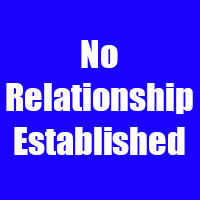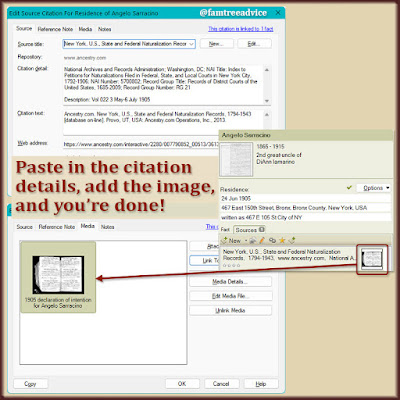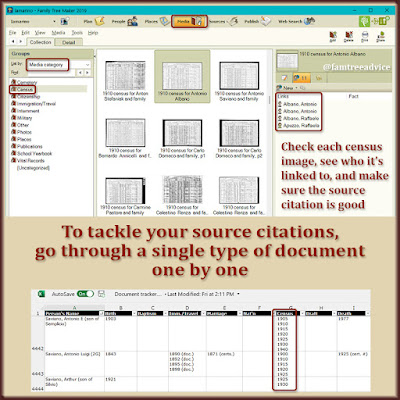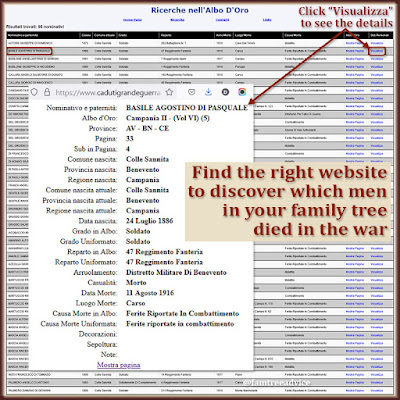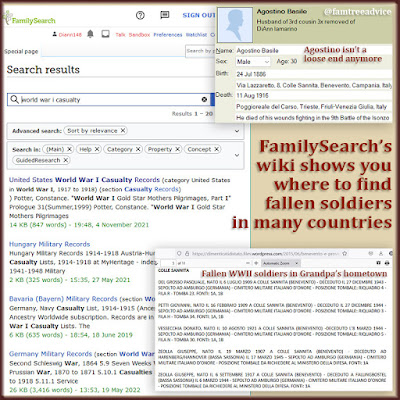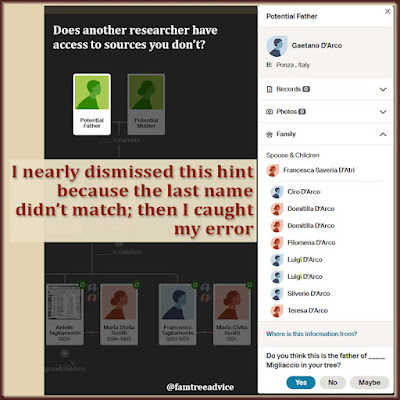I remember how the first group of people in my family tree became disconnected. My mom wanted to know how her cousin Jean was her cousin.
Jean and Mom lived in the same Bronx neighborhood and knew each other as cousins. Jean's maiden name was Saviano, and that was Mom's grandmother's maiden name.
As I pieced together Jean's paternal branch, everything seemed fine. When I realized I didn't know who her 3rd great grandfather was, the connection fell apart. And without available records from their hometown in Italy, I had no way to find our true connection.
Some of my other disconnected groups are families built on speculation. I believe I can find their connection some day, and I want to hold onto what I've learned.
Today's project is an easy way to identify every person in your family tree who is not related to you. We'll find them, tag them, justify them, and make them easy to find again with a click.
The best way to identify your unrelated people is with the free program Family Tree Analyzer. Here's what to do:
- Export your latest GEDCOM file and open it in Family Tree Analyzer.
- Click the Main Lists tab to see a table of everyone in your tree.
- Scroll over to the right to the Relation column.
- Click the little arrow next to the word Relation. Then choose to display only the UNKNOWN relationships.
- Scroll left to the Surname column.
- Click the little arrow next to the word Surname and choose to Sort A to Z.
 |
| FTA finds every disconnected person in your family tree. In a few steps, you can totally own them. |
I'm starting out with 242 unrelated people in my 45,684-person family tree. I know that 25 people named Saviano are in this list because of cousin Jean, and I want to keep them. A lot of Saviano's came to America from their tiny Italian hamlet of Pastene. They are cousins for sure. It's a lack of vital records from Pastene that's keeping me from finding our common ancestors.
What I want to do today is:
- Make sure I want to keep all these hangers-on. It's possible I can let some of them go.
- Identify them visually in my Family Tree Maker file. I'll use my "No Relationship Established" profile picture and a red color-code. That way I'll see the moment a marriage record turns a group of stragglers into relatives.
- Create a filter in Family Tree Maker so I can easily see only my unrelated people.
- Add a note to explain why I'm keeping them. I'll use a few standard notes:
- Related to Saviano branch (This is important for spouses and parents not named Saviano.)
- Related to Sarracino branch (This is my great grandfather's name, from the same tiny hamlet.)
- Related to Muollo branch (Same hamlet/same story!)
- Expect to find connection (That's based on my current mega-project.)
- "Colle Sannita nel 1742" (This is a priceless book detailing every family in Grandpa's hometown that year. I hope to connect to everyone in the book.)
I've made a habit of putting important notes like this in the description field of a person's birth fact. It's always right there for me to see when I view a person in Family Tree Maker. That's where I'll put the notes I listed above.
If you build your tree online, use tagging and filtering options to reach this goal.
With my "unrelated" filter in place, I can turn my attention to this group of people at any time. I can spend a day searching for U.S. documents that may solve the problem of missing Italian documents.
There was one extended family from my Pastene with no connection to anyone else. When I put them in my tree, I must have thought they had a connection, and it fell apart, too. I'm going to delete this group from my family tree. There were a few others who had no place in my tree either.
The results?
- Now I have 201 people in my family tree with no documented relationship to me.
- They're all there for a reason, and now those reasons are in plain sight.
- I can use my new Family Tree Maker "Unrelated" filter at any time to focus on this group of people and try to connect them.
- Anyone seeing my family tree on Ancestry will know that I don't know my connection to these people.
 |
| With this profile image and a red color-code, I'll know the moment an unrelated branch becomes connected in my family tree. |
To create my new "Unrelated" filter, I had my Family Tree Analyzer list of unrelated people on one screen, and Family Tree Maker on the other. I included everyone from the list in the filter.
It's a big improvement for me to be able to identify my stragglers so easily. It's plain to see that most of them are relatives from one town, the only town throwing up brick walls for me. The rest are people I hope to connect. They're on my radar as I go through every available vital record from my ancestral hometowns.
This project is a one-time investment of your time that can pay off for you again and again.
